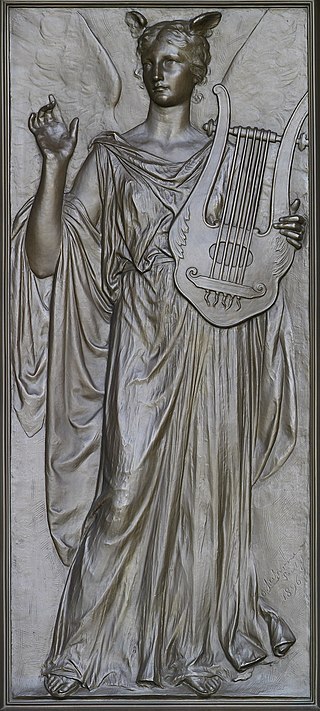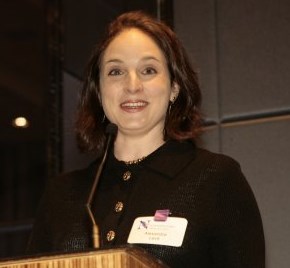Cognitive psychology is the scientific study of mental processes such as attention, language use, memory, perception, problem solving, creativity, and reasoning.
Management is the administration of organizations, whether they are a business, a nonprofit organization, or a government body through business administration, nonprofit management, or the political science sub-field of public administration respectively. It is the science of managing the resources of businesses, governments, and other organizations.

Creativity is a characteristic of someone or some process that forms something new and valuable. The created item may be intangible or a physical object.
Freelance, freelancer, or freelance worker, are terms commonly used for a person who is self-employed and not necessarily committed to a particular employer long-term. Freelance workers are sometimes represented by a company or a temporary agency that resells freelance labor to clients; others work independently or use professional associations or websites to get work.
The creative industries refers to a range of economic activities which are concerned with the generation or exploitation of knowledge and information. They may variously also be referred to as the cultural industries or the creative economy, and most recently they have been denominated as the Orange Economy in Latin America and the Caribbean.
Knowledge workers are workers whose main capital is knowledge. Examples include ICT Professionals, physicians, pharmacists, architects, engineers, scientists, design thinkers, public accountants, lawyers, editors, and academics, whose job is to "think for a living".
Human resource management is the strategic and coherent approach to the effective and efficient management of people in a company or organization such that they help their business gain a competitive advantage. It is designed to maximize employee performance in service of an employer's strategic objectives. Human resource management is primarily concerned with the management of people within organizations, focusing on policies and systems. HR departments are responsible for overseeing employee-benefits design, employee recruitment, training and development, performance appraisal, and reward management, such as managing pay and employee benefits systems. HR also concerns itself with organizational change and industrial relations, or the balancing of organizational practices with requirements arising from collective bargaining and governmental laws.
Organizational climate is a concept that has academic meaning in the fields of organizational behavior and I/O psychology as well as practical meaning in the business world There is continued scholarly debate about the exact definition of organizational climate for the purposes of scientific study. The definition developed by Lawrence R. James (1943-2014) and his colleagues makes a distinction between psychological and organizational climate.
"Psychological climate is defined as the individual employee’s perception of the psychological impact of the work environment on his or her own well-being. When employees in a particular work unit agree on their perceptions of the impact of their work environment, their shared perceptions can be aggregated to describe their organizational climate ."

A pink-collar worker is someone working in the care-oriented career field or in fields historically considered to be women's work. This may include jobs in the beauty industry, nursing, social work, teaching, secretarial work, upholstery, or child care. While these jobs may also be filled by men, they have historically been female-dominated and may pay significantly less than white-collar or blue-collar jobs.
Allied health professions are health care professions that provide a range of diagnostic, technical, therapeutic, and support services in connection with health care. Their services are allied with and support the work of a number of other professions not considered allied health professions, such as medicine, nursing, dentistry, optometry, pharmacy, and others listed below as "excluded professions".
A mental health professional is a health care practitioner or social and human services provider who offers services for the purpose of improving an individual's mental health or to treat mental disorders. This broad category was developed as a name for community personnel who worked in the new community mental health agencies begun in the 1970s to assist individuals moving from state hospitals, to prevent admissions, and to provide support in homes, jobs, education, and community. These individuals were the forefront brigade to develop the community programs, which today may be referred to by names such as supported housing, psychiatric rehabilitation, supported or transitional employment, sheltered workshops, supported education, daily living skills, affirmative industries, dual diagnosis treatment, individual and family psychoeducation, adult day care, foster care, family services and mental health counseling.

The following outline is provided as an overview of and topical guide to thought (thinking):

Imagination is the production of sensations, feelings and thoughts informing oneself. These experiences can be re-creations of past experiences, such as vivid memories with imagined changes, or completely invented and possibly fantastic scenes. Imagination helps apply knowledge to solve problems and is fundamental to integrating experience and the learning process. As a way of building theory, it is called "disciplined imagination". A way of training imagination is by listening to storytelling (narrative), in which the exactness of the chosen words is how it can "evoke worlds".

Since the industrial revolution, participation of women in the workforce outside the home has increased in industrialized nations, with particularly large growth seen in the 20th century. Largely seen as a boon for industrial society, women in the workforce contribute to a higher national economic output as measure in GDP as well as decreasing labor costs by increasing the labor supply in a society.
Collar color is a set of terms denoting groups of working individuals based on the colors of their collars worn at work. These can commonly reflect one's occupation within a broad class, or sometimes gender; at least in the late 20th and 21st century, these are generally metaphorical and not a description of typical present apparel. For the two terms of longest use, white-collar workers are named for the white-collared shirts that were fashionable among office workers in the early and mid-20th century. Blue-collar workers are referred to as such because in the early 20th century, they usually wore sturdy, inexpensive clothing that did not show dirt easily, such as blue denim or cambric shirts.
Psychology encompasses a vast domain, and includes many different approaches to the study of mental processes and behavior. Below are the major areas of inquiry that taken together constitute psychology. A comprehensive list of the sub-fields and areas within psychology can be found at the list of psychology topics and list of psychology disciplines.

Human factors and ergonomics is the application of psychological and physiological principles to the engineering and design of products, processes, and systems. Primary goals of human factors engineering are to reduce human error, increase productivity and system availability, and enhance safety, health and comfort with a specific focus on the interaction between the human and equipment.
Adaptive performance in the work environment refers to adjusting to and understanding change in the workplace. An employee who is versatile is valued and important in the success of an organization. Employers seek employees with high adaptability, due to the positive outcomes that follow, such as excellent work performance, work attitude, and ability to handle stress. Employees, who display high adaptive performance in an organization, tend to have more advantages in career opportunities unlike employees who are not adaptable to change. In previous literature, Pulakos and colleagues established eight dimensions of adaptive performance.

Alexandra Levit is an American writer, consultant, speaker, workplace expert, and futurist. She has written ten business and workplace books and is currently a nationally syndicated columnist for the Wall Street Journal. In 2019, she was named to "The Thinkers 50 Radar" List. In 2021, she received a certification in strategic foresight from the University of Houston.
Philip H. Mirvis is an organizational psychologist and faculty member at Boston College, in the Center for Corporate Citizenship. He has written ten books on topics in large-scale organizational change, corporate governance, and the characteristics of the workforce and workplace. He has served as an adviser on corporate social responsibility and sustainability to companies including Ben & Jerry's, Mitsubishi, PepsiCo, Royal Dutch Shell, SK Group, Unilever, and Wipro.






